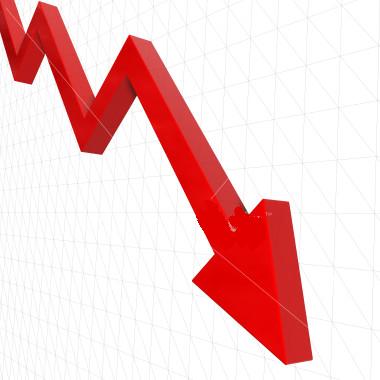Vivek Kaul
It’s morally wrong to allow a sucker to keep his money – W C Fields
The Indian retail investor is a sucker. He invests when the markets are high and he gets out when the markets are low. Don’t believe me? Look at the table that follows.
This table shows the net inflows(total inflows minus total outflows) into equity mutual funds in India during the course of a financial year. As can be seen in 2007-2008 equity mutual funds saw a net inflow of Rs 40,782 crore. This was the time when the stock market was on fire. In early January 2008, the Sensex almost touched 21,000 points. It had started the financial year at around 12,500 points.
| ear | Inflows/Outflows in/from equity mutual funds (in Rs Crore) |
| 2007-2008 | 40,782 |
| 2008-2009 | 1,056 |
| 2009-2010 | 595 |
| 2010-2011 | -13,405 |
| 2011-2012 | 264 |
| 2012-2013 | -12,931 |
| 2013-2014 | -7,627 |
| 2014-2015 (from April 1,2014 to October 31 2014) | 39,217 |
Source :Association of Mutual Funds in India
And when the party was on the retail investor couldn’t have been far behind. He poured money into equity mutual funds. In January 2008, equity mutual funds saw a net inflow of Rs 12,717 crore. The stock market started to fall from mid January onwards. In fact, the Sensex fell from 21,000 points to 17,500 points in a matter of a few days.
So, the good things came to an end pretty soon. Over the next few years, the faith of the retail investor in the stock market came down dramatically and inflows into equity mutual funds almost dried down. In 2010-2011, the outflows from equity mutual funds reached Rs 13,405 crore. The trend continued in 2012-2013 and 2013-2014 as well.
What these data points clearly show us is that the retail investor poured money into the stock market at high levels and got out only once the market started to fall. The opposite of the buy low, sell high, strategy that the stock market experts keep talking about. But what else do you expect from a sucker.
Nevertheless, things seem to have started to change again. The retail investor seems to be back into the stock market. This financial year (between April and October 2014) has seen a net inflow of Rs 39,217 crore into equity mutual funds. And if things go on as they currently are, the year might see the highest inflow into equity mutual funds ever.
This is not surprising given that the Sensex has rallied by close to 25% between April and October 2014 to reach almost 28,000 points. And this has got the suckers interested in the stock market all over again.
In fact, the Indian retail investor isn’t the only sucker going around. Maggie Mahar in her book Bull!—A History of the Boom and Bust, 1982–2004, makes a similar point about American investors during the dotcom bubble.
Between 1982 and 1996, the Dow Jones Industrial Average gave positive returns in 12 out of the 14 years. In eight of the 12 years that the Dow had given positive returns, the absolute return had been 20 percent or more. This led to more investors entering the stock market.
The number of investors in the stock market increased, as many middle class investors made their first jump into the stock market. Wealthier Americans already owned stocks. Nearly three-fourths of those having financial assets of $500,000 or more had made their first investment in stocks sometime before 1990. Some 33 percent of the households with financial assets of $25,000 to $100,000 bought their first stock or invested in a mutual fund that in turn invested in stocks between 1990 and 1995. But 40 percent of those owning financial assets in the range of $25,000 to $99,000, and 68 percent of those with financial assets of less than $25,000 made their first purchase after January 1996.
So, the American retail investor started taking interest in technology stocks only after January 1996, and by that time the dotcom bubble was well and truly on. A similar sort of dynamic was visible in the real estate bubble that followed, when a large number of individuals started taking loans to buy homes that they wanted to flip, only by 2005-2006, when the bubble was at its peak.
Economic theory tells us that more often than not, higher prices dampen demand and lower prices increase demand. But when the stock market witnesses a bull run, investors do not behave like normal consumers.
As Mahar puts it in Bull! “In the normal course of things, higher prices dampen desire. When lamb becomes too dear, consumers eat chicken; when the price of gasoline soars, people take fewer vacations. Conversely, lower prices usually whet our interest: color TVs, VCRs, and cell phones became more popular as they became more affordable. But when a stock market soars, investors do not behave like consumers. They are consumed by stocks. Equities seem to appeal to the perversity of human desire. The more costly the prize, the greater the allure.”
This is something that every investor should try and remember.
What these examples show is that the retail investor tends to enter a market only once its done well for a while. In the process he or she ends up making losses or limited gains.
Let’s compare this to a situation of an investor who had invested regularly in the stock market over the years, through a systematic investment plan.
Let’s consider the Goldman Sachs Nifty BeES fund for this exercise. This particular fund is essentially an exchange traded index fund and invests in stock that constitute the Nifty index. A regular monthly investment in this fund from September 2007 till November 2014, would have yielded a return of 14.10% per year. During the same period the Nifty has given a return of around 9.15% per year, barely matching the rate of inflation.
What is the point of investing in the stock market over the long term, if you can’t even beat the rate of inflation?
Now let’s say you had started investing in January 2008, when the stock market was at a then all time high level and continued to invest in the Nifty BeES till date. The returns on the systematic investment plan would be 14.84%. During the same period the Nifty gave a return of 4.5% per year. Some savings accounts would have given more return than that.
Moral of the story: Successful stock market investing can be simple and boring at the same time.
To conclude, retail investors entering the stock market in droves has been a clear sign of the market nearing its high levels, in the past. Is that the case this time around as well? This remains a difficult question to answer given that foreign investors are the ones really driving the Indian stock market.
As long as Western central banks maintain low interest rates, these investors can borrow money at low interest rates and invest them in financial markets all over the world, including India. Given this, the retail investor entering the market right now may not turn out to be suckers at the end of the day.
But the same cannot be said about the retail investors still waiting in the wings.
Stay tuned.
Disclosure: The basic idea for this column came after reading this piece in the Business Standard
The column originally appeared on www.equitymaster.com on Nov 13, 2014



